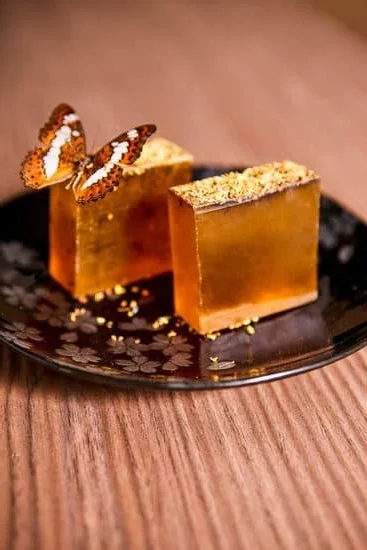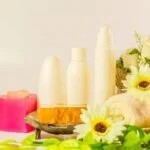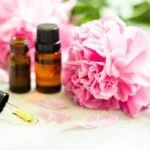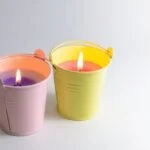Aromatherapy products have become increasingly popular in recent years, as people seek natural remedies and ways to enhance their well-being. If you’re interested in starting a business selling aromatherapy products, you’re entering a market that is experiencing high demand.
In this article, we will guide you through the process of selling aromatherapy products successfully. From understanding the market and identifying target customers to establishing an online presence and developing effective marketing strategies, we will cover all the essential steps to help you thrive in this profitable industry.
Aromatherapy has gained traction as individuals search for alternatives to traditional medicine and chemical-based products. These products which include essential oils, diffusers, and scented candles are sought after for their potential therapeutic benefits such as stress relief, improved sleep quality, and enhanced mood. The rising interest in holistic health practices has contributed to the growing demand for aromatherapy products.
However, entering a competitive market requires careful planning and research. Understanding who your target customers are and what they need is crucial in determining your product line and marketing strategies. By crafting a unique selling proposition and creating a memorable brand identity, you can differentiate yourself from competitors and attract a loyal customer base. Creating an online presence through e-commerce websites and social media platforms is also crucial in reaching out to potential customers who prefer shopping online.
Selling aromatherapy products not only allows you to tap into the lucrative wellness industry but also offers opportunities for creativity and personal growth. With the right knowledge and strategies outlined in this article series, you can position yourself as a successful seller of aromatherapy products while making a positive impact on people’s lives through natural remedies.
Understanding the Market
One of the crucial steps in selling aromatherapy products is understanding your target customers and their specific needs. By identifying your target market, you can create products and marketing strategies that cater to their preferences, increasing the chances of success for your business. Here are some key considerations when identifying your target customers:
- Demographics: Start by analyzing the demographic characteristics of your potential customers, such as age, gender, location, and income level. Different demographics may have varying preferences and needs when it comes to aromatherapy products.
- Lifestyle and Interests: Consider the lifestyle and interests of your target customers. Are they health-conscious individuals who prioritize natural products? Are they interested in holistic wellness practices? Understanding these aspects will help you tailor your product offerings accordingly.
- Pain Points: Pinpoint the pain points or problems that your target customers may be experiencing. For example, some people may be looking for stress relief or better sleep quality through aromatherapy. By addressing these specific needs with targeted product offerings, you can attract more customers.
Once you have a clear picture of who your target customers are, you can develop strategies to meet their needs effectively. This includes designing product packaging and marketing materials that resonate with them, creating content that addresses their pain points, and choosing appropriate distribution channels to reach them.
By conducting thorough market research and understanding your target audience’s preferences and needs, you can position your business for success in the competitive aromatherapy market.
Finding the Right Product Line
Finding the right product line is a crucial step in successfully selling aromatherapy products. Researching and selecting a range of high-quality aromatherapy products will not only meet the needs of your target customers but also establish your brand as a trusted authority in the industry. Here are some important factors to consider when finding the right product line for your business:
Identify Popular Aromatherapy Products
Begin by identifying the popular aromatherapy products that are in demand among consumers. Essential oils, diffusers, candles, bath salts, and skincare products are some examples of popular aromatherapy items. Conduct market research to understand which specific products are trending and have a high potential for sales. Consider factors such as supply and demand, customer reviews, and competition analysis to make informed decisions about which products to offer.
Quality Assurance
Ensure that the aromatherapy products you choose to sell meet high standards of quality. Look for suppliers or manufacturers that source their materials from reputable sources and follow strict manufacturing processes. Check if they comply with industry regulations and have necessary certifications related to safety, purity, organic content, or cruelty-free practices. Offering high-quality products will not only attract customers but also contribute to building trust and credibility for your brand.
Diversify Your Product Range
Consider offering a diverse range of aromatherapy products to cater to different customer preferences and needs. This can include various scents and blends of essential oils, different types of diffusers or inhalers, skincare items suitable for different skin types or concerns, or unique packaging options. Diversifying your product range allows you to capture a wider customer base and cater to different segments within the aromatherapy market.
Monitor Trends and Innovations
The field of aromatherapy is constantly evolving with new trends and innovations emerging regularly. Stay updated with industry news, attend trade shows or conferences, and follow influential figures or industry experts to gain insights into emerging trends in aromatherapy. By being aware of the latest developments, you can adapt your product line to meet evolving customer demands and stay ahead of the competition.
Finding the right product line for your aromatherapy business requires thorough research, careful consideration of quality standards, and an understanding of market trends. By selecting a range of high-quality and diverse products that reflect current demand and customer preferences, you will position your brand for success in the competitive aromatherapy market.
Building a Brand
Building a strong brand is essential for selling aromatherapy products. A well-crafted unique selling proposition (USP) and a memorable brand identity can set your products apart from the competition and attract loyal customers. Here are some steps to consider when building your brand:
- Define your USP: Your unique selling proposition is what sets you apart from competitors and gives customers a reason to choose your aromatherapy products. Identify the key features or benefits of your products and highlight how they solve customers’ problems or satisfy their needs. For example, if your products use only organic ingredients, emphasize the health benefits and purity of your formulations.
- Create a brand story: A compelling brand story can resonate with customers on an emotional level and create a connection with your brand. Think about the values, vision, and mission behind your aromatherapy products and communicate them effectively through storytelling. Whether it’s the inspiration behind starting your business or the positive impact you aim to make in people’s lives, craft a narrative that brings meaning to your brand.
- Design a visually appealing brand identity: Your brand identity encompasses elements such as logo design, color scheme, typography, and packaging design. These visual elements should be consistent across all touchpoints – from product labels to marketing materials – to create a cohesive brand experience for customers. Consider working with a professional designer who specializes in branding to ensure that your visual identity accurately represents the essence of your aromatherapy products.
In addition to these steps, remember that building a successful brand requires consistent messaging, delivering on promises made through quality products or services, and engaging with customers through various channels including social media platforms, email newsletters, and customer feedback mechanisms. By investing time and effort into crafting a unique selling proposition and creating a memorable brand identity, you can establish yourself as a trusted seller of aromatherapy products in the market.
Establishing an Online Presence
In today’s digital age, having a strong online presence is crucial for the success of any business, including sellers of aromatherapy products. Setting up an e-commerce website and utilizing social media platforms can greatly expand your reach and attract more customers. Here are some important steps to take when establishing an online presence:
1. Set Up an E-commerce Website:
Creating a user-friendly and visually appealing e-commerce website is essential for selling aromatherapy products online. Choose a reliable e-commerce platform that offers secure payment methods and easy navigation. Include detailed product descriptions, high-quality images, and customer reviews to build trust with potential buyers. Implement search engine optimization (SEO) techniques to ensure your website ranks higher in search engine results.
2. Utilize Social Media Platforms:
Social media has become a powerful marketing tool, allowing businesses to connect directly with their target audience. Create accounts on popular platforms such as Facebook, Instagram, Twitter, and Pinterest to showcase your aromatherapy products. Regularly post engaging content related to aromatherapy, such as product benefits or DIY recipes using essential oils. Interact with your followers by responding to comments, addressing concerns, and running giveaways or contests.
3. Develop a Content Strategy:
Creating valuable content can help establish you as an authority in the field of aromatherapy while driving traffic to your website and social media pages. Develop a content strategy that includes blog posts, articles, videos, or podcasts about the benefits of using aromatherapy products or tips for incorporating them into daily life. Optimize your content with relevant keywords to improve its visibility in search engines.
| Statistic | Data |
|---|---|
| Percentage of global population using the internet | 59.5% |
| Percentage of consumers who shop online at least once a month | 88% |
| Average amount spent by online shoppers per order | $122 |
As seen from the statistics above, the majority of people worldwide use the internet and a significant percentage regularly shop online. Therefore, having an e-commerce website and leveraging social media platforms is crucial for reaching these potential customers and maximizing sales opportunities in the aromatherapy market.
Developing Effective Marketing Strategies
Effective marketing strategies are crucial in selling aromatherapy products and driving sales. Utilizing influencer marketing, content creation, and email marketing can greatly enhance a brand’s visibility and attract potential customers.
Influencer Marketing
Implementing influencer marketing involves partnering with individuals who have a substantial following on social media platforms such as Instagram or YouTube. These influencers can promote your aromatherapy products to their audience, which can significantly increase brand awareness and generate sales.
When selecting influencers, it is important to choose those whose values align with your brand and whose audience consists of your target customers. Collaborating with influencers allows you to tap into their credibility and trust, effectively reaching a wider audience that may be interested in your products.
Content Creation
Creating valuable and engaging content is essential for attracting and retaining customers. Develop informative blog posts, articles, or videos that educate consumers about the benefits of using aromatherapy products, how they can integrate them into their daily lives, and other related topics of interest.
Additionally, make use of eye-catching visuals such as high-quality product photos or videos to capture attention on social media platforms. Content creation not only establishes your expertise in the field but also helps build a loyal customer base who sees value in what you offer.
Email Marketing
Email marketing is a powerful tool for nurturing customer relationships and driving sales. Build an email list by offering incentives such as exclusive discounts or useful resources related to aromatherapy to encourage sign-ups. Send regular newsletters or promotional emails to share updates about new product launches, discounts, or any other relevant information with your subscribers. Personalize your emails based on customer preferences or purchase history to ensure they feel valued and engaged with your brand.
By integrating influencer marketing, content creation, and email marketing into your overall marketing strategy plan, you can effectively drive sales of aromatherapy products while simultaneously building brand recognition and loyalty. Implementing these strategies will enable you to reach your target audience, offer valuable content, and maintain ongoing engagement with customers.
Building Trust and Credibility
Building trust and credibility is essential for any business, and it is especially important when selling aromatherapy products. In order to establish yourself as a reputable seller, there are several key strategies you can implement. This section will explore the importance of obtaining certifications, showcasing customer testimonials, and implementing a solid customer service system.
Obtaining Certifications
To build trust with potential customers, it is crucial to obtain relevant certifications for your aromatherapy products. Certifications demonstrate that your products have been tested and meet certain industry standards. Look for certifications from reputable organizations such as the International Organization for Standardization (ISO) or the National Association for Holistic Aromatherapy (NAHA).
When customers see that your products are certified, they are more likely to trust their quality and effectiveness. Include information about these certifications on your website and product packaging to instill confidence in your brand.
Customer Testimonials
Another effective way to build trust is by showcasing positive customer testimonials. Encourage satisfied customers to leave reviews on your website or social media pages. These testimonials act as social proof that others have had positive experiences with your products.
Consider reaching out to influencers or bloggers in the aromatherapy industry and offer them free samples or discounts in exchange for honest reviews or mentions on their platforms. This can help expand your reach and further establish credibility among a wider audience.
Implementing a Solid Customer Service System
Providing excellent customer service is essential for building trust with your customers. Implementing a solid customer service system involves being responsive to inquiries and addressing any concerns promptly. Offer multiple channels of communication, such as email, phone, and live chat support.
Train your customer service team to be knowledgeable about your products so they can provide accurate information and guidance to customers. By providing exceptional support throughout the purchasing process and beyond, you will create loyal customers who trust your brand and are more likely to recommend your products to others.
Pricing and Packaging
When it comes to selling aromatherapy products, pricing and packaging play a crucial role in attracting customers and driving sales. Determining competitive prices and creating attractive packaging designs are key steps in positioning your products effectively in the market.
To determine competitive prices for your aromatherapy products, it is important to consider factors such as production costs, target market preferences, and competitor pricing. Conduct thorough research on the market to gain insights into the average prices of similar products. This will help you set a price that is both competitive and profitable for your business. Keep in mind that pricing too high may deter potential customers, while pricing too low may suggest lower quality or undermine your profit margins.
In addition to determining competitive prices, creating attractive packaging designs is essential for capturing consumers’ attention and conveying the value of your aromatherapy products. The packaging should reflect the quality of the product inside while aligning with your brand identity. Consider using eco-friendly materials or unique shapes that differentiate your products from others on the market. Incorporating visually appealing elements such as vibrant colors, elegant fonts, and aesthetically pleasing imagery can also enhance the attractiveness of your packaging design.
| Factors | Considerations |
|---|---|
| Production Costs | Include all costs associated with manufacturing, labeling, and packaging |
| Target Market Preferences | Research customer expectations and willingness to pay for aromatherapy products |
| Competitor Pricing | Analyze similar products’ prices to position yours competitively |
| Brand Identity | Ensure packaging designs align with your brand and its values |
| Eco-Friendly Materials | Consider using sustainable and environmentally friendly packaging materials |
| Visual Appeal | Incorporate attractive colors, fonts, and imagery to make your packaging visually appealing |
By determining competitive prices and creating attractive packaging designs, you can effectively position your aromatherapy products in the market and capture the attention of potential customers. Remember to regularly review your pricing strategy and packaging design to adapt to changing market conditions and consumer preferences. With a well-thought-out approach, your pricing and packaging decisions can contribute significantly to the success of your aromatherapy product business.
Distribution and Sales Channels
Choosing the right distribution methods and exploring sales opportunities is a crucial step in selling aromatherapy products. With the increasing popularity of online shopping, it is essential to consider various distribution channels to reach a wide customer base. Additionally, exploring sales opportunities through physical stores and wholesale partnerships can help expand your reach and increase sales.
Online Marketplaces
One effective way to distribute aromatherapy products is by utilizing online marketplaces. Platforms like Amazon, Etsy, and eBay are popular options where customers can discover and purchase products. These platforms offer a ready-made audience and provide the necessary infrastructure for handling transactions and shipping logistics. By listing your products on these marketplaces, you can tap into their extensive customer base and gain exposure to potential buyers worldwide.
When choosing an online marketplace, consider factors such as fees, competition, and target audience. Research each platform’s policies, including seller fees, commission rates, and customer review systems. Additionally, evaluate the level of competition within your product niche on each platform to ensure there is enough demand for your offerings. Understanding the demographics of each marketplace’s user base will help you determine if it aligns with your target customers.
Physical Stores
While e-commerce has been rapidly growing in recent years, physical stores still play a significant role in retail. Establishing partnerships with brick-and-mortar stores can provide exposure to customers who prefer the in-person shopping experience or want to try out aromatherapy products before purchasing.
When considering physical stores as a distribution method for your aromatherapy products, research retailers that align with your brand values and target customers. Look for specialty stores that focus on wellness, natural products, or beauty/personal care items. Approach them with a well-crafted pitch highlighting why your products would be a valuable addition to their inventory. Consider offering samples or organizing demo events to facilitate product testing and generate interest among potential customers.
Wholesale Partnerships
Exploring wholesale partnerships can help expand your distribution reach by allowing other retailers to sell your products. This strategy is particularly beneficial if you are looking to scale your business quickly or tap into new geographical markets.
To find potential wholesale partners, attend trade shows and industry conferences relevant to aromatherapy, wellness, or beauty. These events provide opportunities to connect with retailers searching for unique product lines to offer their customers. Alternatively, reach out directly to retailers that align with your brand values and target customers. Offer attractive wholesale pricing and highlight the benefits of carrying your products in terms of customer demand and profitability.
Customer Retention
Building a loyal customer base is essential for the long-term success of any business. This is especially true in the aromatherapy products industry, where repeat customers can become valuable brand advocates and contribute to consistent sales. In this section, we will explore effective strategies for implementing loyalty programs, offering discounts, and providing ongoing customer support to foster customer retention.
One strategy to promote customer loyalty is by implementing a well-designed loyalty program. By offering incentives such as discounts on future purchases or exclusive access to special promotions, you can encourage customers to continue buying from your brand. Additionally, loyalty programs can provide opportunities for personalized interactions with customers by sending them targeted offers based on their purchase history or preferences.
Another effective way to retain customers is by regularly offering discounts. Limited-time promotions or seasonal sales can create a sense of urgency among customers and incentivize them to make repeat purchases. It’s important to strike a balance with discount offerings so that they don’t devalue your products but still provide attractive incentives for customers to continue buying from your brand.
Providing ongoing customer support is crucial in maintaining a positive relationship with your customers. Promptly addressing inquiries and resolving issues can greatly enhance customer satisfaction and increase the likelihood of repeat purchases. Implementing a multi-channel support system that includes options like live chat, email, or phone support allows customers to reach out using their preferred method of communication.
| Strategy | Description |
|---|---|
| Loyalty Programs | Implementing incentives such as discounts on future purchases or exclusive access to special promotions. |
| Discounts | Offering limited-time promotions or seasonal sales to incentivize customers to make repeat purchases. |
| Ongoing Customer Support | Providing prompt and efficient support through multiple channels to enhance customer satisfaction and loyalty. |
By implementing these strategies, you can foster customer loyalty, increase repeat purchases, and ultimately drive the success of your aromatherapy products business. Remember that retaining existing customers is just as important as acquiring new ones, so investing in customer retention efforts should be a priority for long-term success.
Conclusion
In conclusion, selling aromatherapy products can be a lucrative venture if approached strategically. By understanding the market, identifying target customers and their needs, and selecting the right product line, sellers can position themselves for success in this high-demand industry. Building a strong brand identity and establishing an online presence are crucial steps in gaining visibility and reaching potential customers.
Effective marketing strategies such as influencer marketing, content creation, and email marketing can help drive sales and generate interest in aromatherapy products. Additionally, building trust and credibility through certifications, customer testimonials, and exceptional customer service is vital to establishing a loyal customer base. Pricing competitively and creating attractive packaging designs are also important elements of a successful aromatherapy business.
Choosing the right distribution methods and exploring various sales channels will ensure that products reach as many customers as possible. This may include online marketplaces, physical stores, or wholesale partnerships. Finally, implementing loyalty programs, offering discounts, and providing ongoing customer support will encourage repeat purchases and help retain customers in the long run.
With careful planning and execution of these strategies, sellers can embrace the profitable aromatherapy market with confidence. By following these steps outlined in this article, sellers can become successful sellers of aromatherapy products and tap into the growing demand for natural healing solutions.
Frequently Asked Questions
Do I need FDA approval to sell essential oils?
FDA approval is not required to sell essential oils. Essential oils are classified as cosmetic products, and the FDA does not regulate or approve cosmetics before they are sold on the market. However, it is important to ensure that the essential oils you sell meet certain quality standards and are safe for use.
This can be achieved by sourcing your oils from reputable suppliers who provide detailed information about their sourcing practices and testing procedures. Additionally, it is wise to educate yourself about the potential risks and benefits of different essential oils, as well as any applicable regulations or guidelines set by professional organizations such as the International Federation of Aromatherapists or the National Association for Holistic Aromatherapy.
How to make money with aromatherapy?
There are several ways to make money with aromatherapy. One option is to offer personal consultations or therapy sessions where you guide clients in using essential oils to address specific health concerns or promote relaxation and well-being. Another avenue is retail sales, either through an online store or a physical shop where you sell a variety of essential oils, diffusers, carriers oils, and other related products.
You can also consider offering classes or workshops to teach others about aromatherapy and how to effectively use essential oils in their daily lives. It may also be profitable to create your own line of aromatherapy products like blends, creams, or candles that cater to specific needs.
How do I market my aromatherapy business?
Marketing an aromatherapy business can be done through various channels and strategies tailored specifically for this niche industry. First and foremost, creating a strong online presence is crucial.
This includes having a professional website that showcases your products and services, along with informative content such as blog posts educating readers about essential oil uses and benefits. Utilize social media platforms like Facebook, Instagram, or Pinterest to engage with your target audience by sharing useful tips, DIY recipes, testimonials from satisfied customers, and behind-the-scenes insights into your business processes.

Are you looking for a natural way to improve your health and wellbeing?
If so, aromatherapy may be the answer for you.






